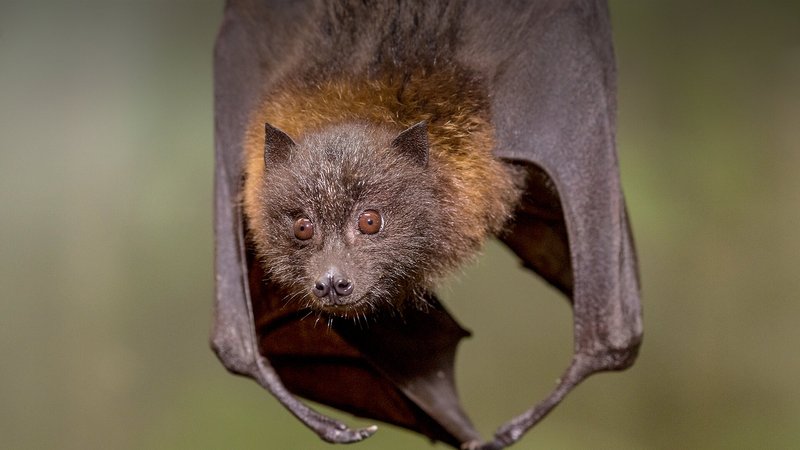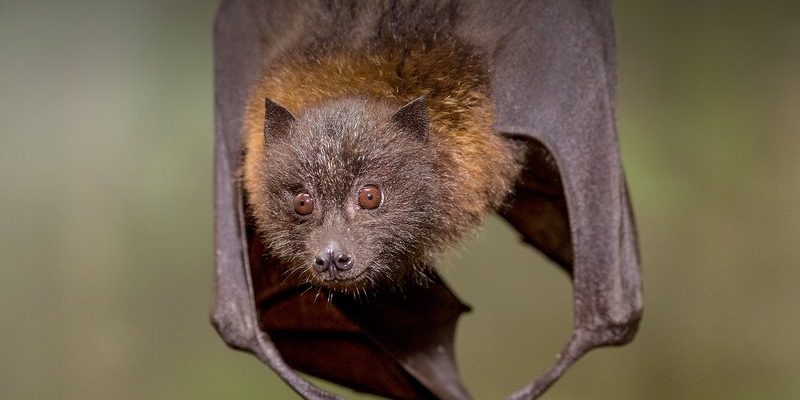
In this exploration, we’ll dive into the conservation status of fruit bats, shedding light on why they matter and what’s being done (or needs to be done) to protect them. Much like a recipe, understanding their plight involves mixing a bit of biology, environmental science, and conservation efforts to create a complete picture of their survival.
What Are Fruit Bats, Anyway?
Fruit bats, often referred to as flying foxes, belong to the family Pteropodidae. They’re mostly found in tropical and subtropical regions, from Southeast Asia to Africa. Unlike their insect-eating cousins, fruit bats primarily feed on nectar, fruits, and flowers. Imagine them as the “postmen” of nature, darting from tree to tree, delivering pollen and seeds, which helps new plants grow.
You might be surprised to learn that these bats have excellent vision, relying more on sight than echolocation, which sets them apart from other bat species. They can spot their favorite fruits—like mangoes and bananas—much like you’d spot a delicious dessert at a café. Their large eyes and keen sense of smell are what make them such effective foragers.
But here’s a fun fact: some fruit bats can fly up to 50 miles in a single night while searching for food! That’s like you biking around your neighborhood and discovering new spots, only they’re doing it in the dark, using their instincts and senses.
Are Fruit Bats Endangered?
The short answer is: yes, some species of fruit bats are endangered. According to the International Union for Conservation of Nature (IUCN), about 25% of the world’s fruit bat species are classified as either vulnerable, endangered, or critically endangered. This alarming statistic is a wake-up call for conservationists and wildlife enthusiasts alike.
What’s causing this decline? Factors range from habitat loss due to deforestation and urbanization to hunting and the illegal wildlife trade. Imagine a cozy café being replaced by a parking lot—that’s what’s happening to fruit bat habitats around the world. These bats need trees for roosting and foraging, and when those disappear, their populations dwindle.
Interestingly, fruit bats also face risks from diseases, especially in areas where they come into contact with humans or domestic animals. This can lead to negative perceptions, where locals may view them as threats rather than allies in maintaining ecological balance.
The Role of Fruit Bats in Ecosystems
Let me explain why fruit bats are so important. These bats are not just adorable; they play a vital role in our ecosystems. For starters, they help with pollination. As they sip nectar, they transfer pollen from flower to flower, aiding plant reproduction. This process is crucial for many fruit trees, including bananas and avocados, which are staples in our diets.
Moreover, their seed dispersal abilities can lead to forest regeneration. When a fruit bat eats a fruit, it doesn’t digest every seed. Instead, it excretes the seeds, often far from where they were eaten. Picture tossing seeds across the park—the results can lead to new plants sprouting up in various locations. This diversity is beneficial for the environment, promoting healthy ecosystems.
But fruit bats are not just nature’s gardeners; they also provide food for other wildlife. Birds, reptiles, and even some mammals rely on them as a food source. This interconnected relationship showcases how each species, including fruit bats, plays a part in maintaining ecological balance. When one is threatened, the ripple effects can be felt throughout the ecosystem.
Threats Facing Fruit Bats
Several challenges confront fruit bats today. The biggest one? Habitat destruction. As forests are cleared for agriculture or urban development, these bats lose their homes and food sources. It’s like tearing down a library—you’re not just removing books; you’re also taking away a place where knowledge thrives.
Another significant threat is hunting. In many cultures, fruit bats are considered delicacies. In some regions, they’re hunted for their meat or collected for the pet trade. It’s a tough situation because while local traditions and livelihoods matter, these practices can push bat populations to the brink.
Lastly, climate change poses a significant risk. Shifts in temperature and weather patterns can affect the availability of food sources. If fruit bats can’t find enough food, their survival becomes even more precarious. As they struggle to adapt, populations can decline, bringing them closer to endangered status.
Conservation Efforts Around the Globe
So what’s being done to help fruit bats? Luckily, there are many conservation initiatives in place. Various organizations work tirelessly to raise awareness about the importance of these bats. For example, the Bat Conservation International focuses on promoting better understanding and protection of bat species worldwide, including fruit bats.
In some countries, efforts include establishing protected areas where fruit bats can live and thrive without the threat of habitat destruction. These reserves act as safe havens—think of them like a comfy retreat where bats can go and rest without worry.
Education also plays a vital role. By informing local communities about the benefits of fruit bats, many organizations aim to shift perceptions. When people understand how these bats help their environment, they might think twice before harming them. Building such awareness can lead to a stronger commitment to conservation efforts.
How You Can Help Fruit Bats
You might be wondering what you can do to help fruit bats. Every small action counts! Here are a few ideas to get you started:
- Support local conservation efforts: Find organizations in your area that focus on wildlife preservation, particularly bats.
- Spread the word: Share information about fruit bats with friends and family. Raising awareness can lead to more people getting engaged in conservation.
- Reduce habitat loss: If you’re involved in land development or gardening, consider how your actions might affect local wildlife. Plant native trees and create bat-friendly habitats.
- Advocate for policy changes: Support legislation that protects wildlife and their habitats. Your voice can make a difference!
By taking these steps, you’re contributing to a larger effort to secure a future for fruit bats and the ecosystems they support. It may seem like a small action, but every bit adds up in the grand scheme of things.
Final Thoughts on Fruit Bat Conservation
Caring for fruit bats goes beyond their charming appearance. They’re essential for our ecosystems, helping to pollinate plants and disperse seeds. As we’ve seen, their survival is threatened by habitat loss, hunting, and climate change. But with concerted conservation efforts and the involvement of people like you, there’s hope for these flying foxes.
Conservation is a collective journey, much like a team sport, where every contribution matters. So, whether you’re sharing your newfound knowledge or supporting local initiatives, remember that your actions can help protect not just fruit bats but the delicate balance of our environment as a whole. Together, we can ensure that these remarkable creatures continue to soar through our skies for generations to come.

